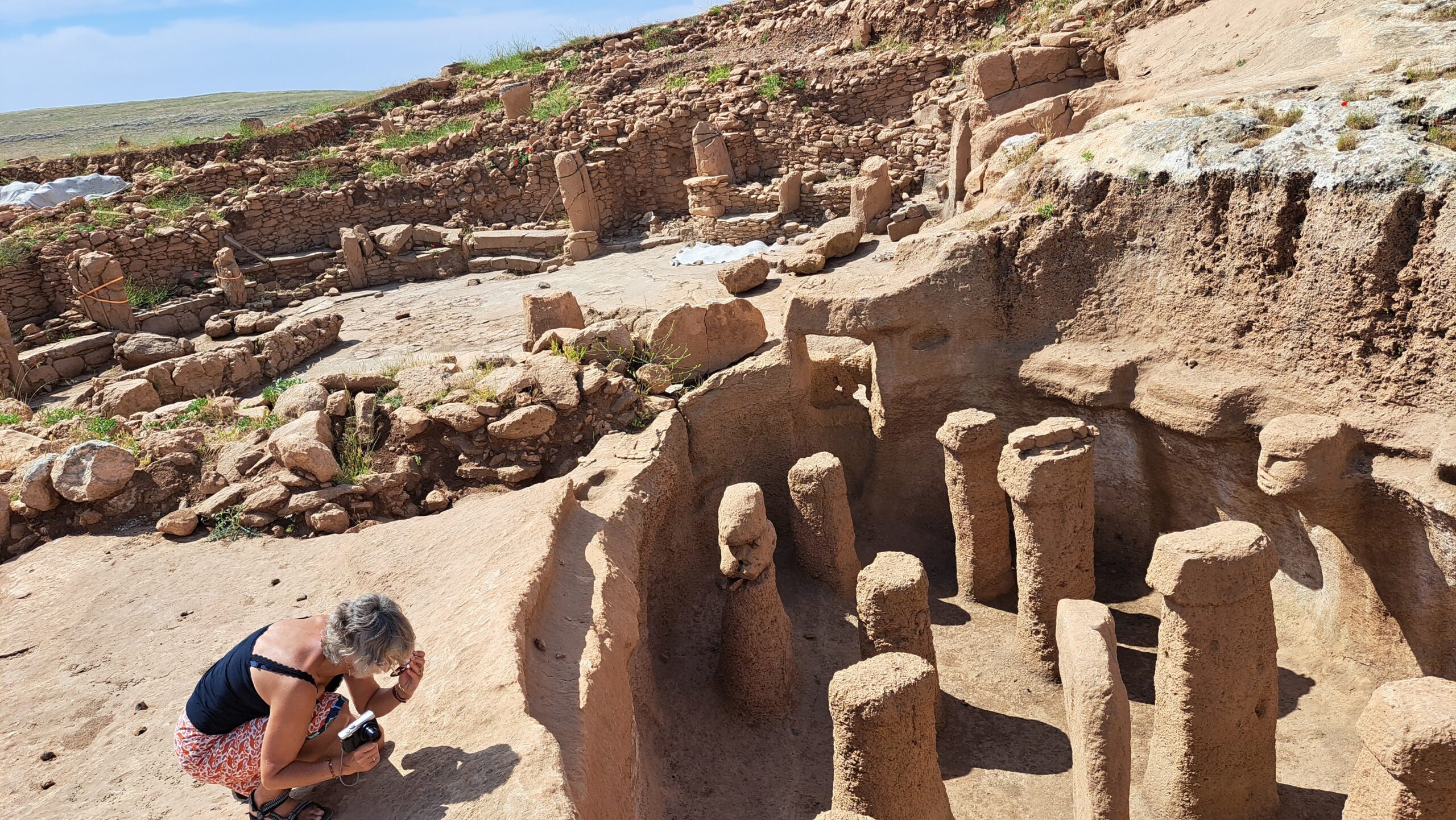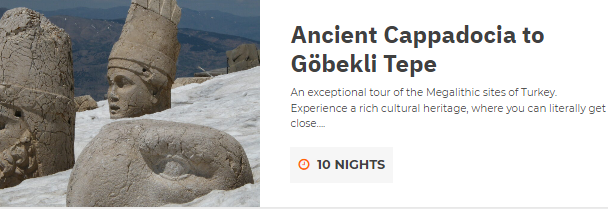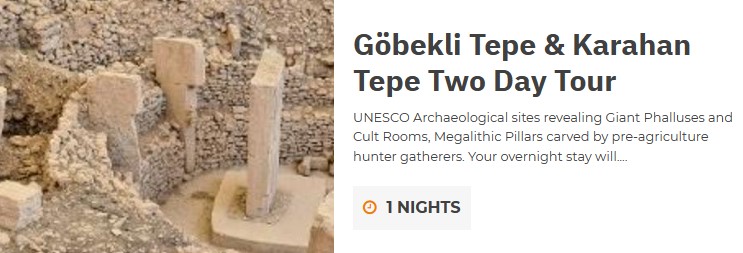Karahan Tepe is one of the Pre Pottery Neolithic Sites emerging in what is known as the Taş Tepeler Region of Southeast Turkey in the Province of Şanlıurfa. Taş Tepeler simply means stone hills and is an apt description of a region producing numerous sites characterised by T shaped anthropomorphic pillars of the type that first came to prominence at Göbekli Tepe.
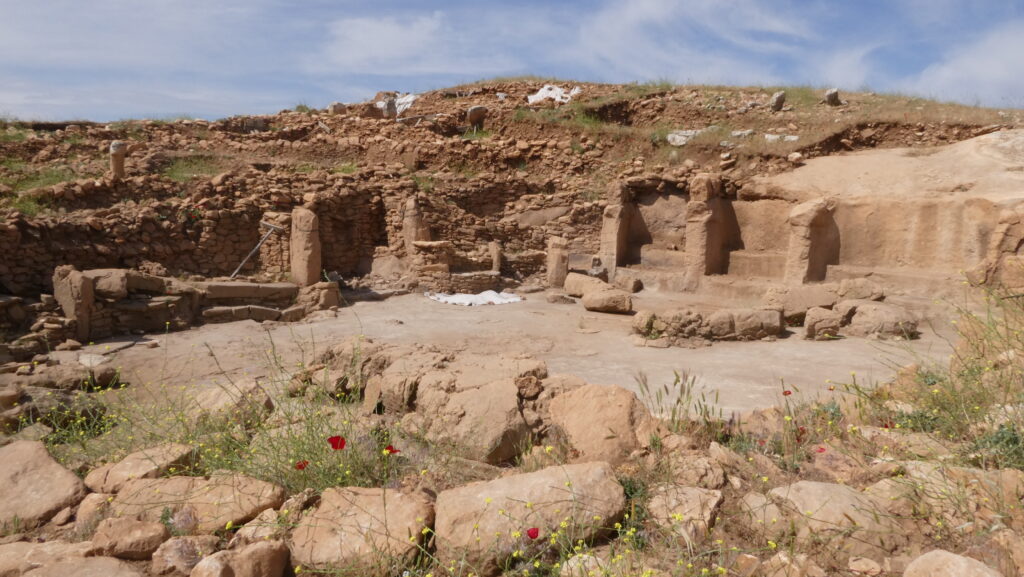
Karahan Tepe Assembly space
Karahan Tepe is the most prominent of Göbekli Tepe’s sister sites currently under excavation and we have been privileged enough to repeat the experience that we had with Göbekli Tepe as we have been able to watch the site emerging from the ground. Unlike Göbekli Tepe, Karahan Tepe is a mixed use domestic/ritual site, albeit with a very prominent ritual centre. Domestic activity at Göbekli Tepe may be emerging but it is less obvious than it is at Karahan Tepe.
Article continued below…
One of the real privileges at being able to visit sites like these frequently over time, is that each visit reveals either a new development in the stages of excavation or a feature you didn’t fully appreciate the last time you visited. Our recent visit to Karahan Tepe was quite early in the morning and the low angle of the sun highlighted and emphasised features that were less clear the last time we were there.
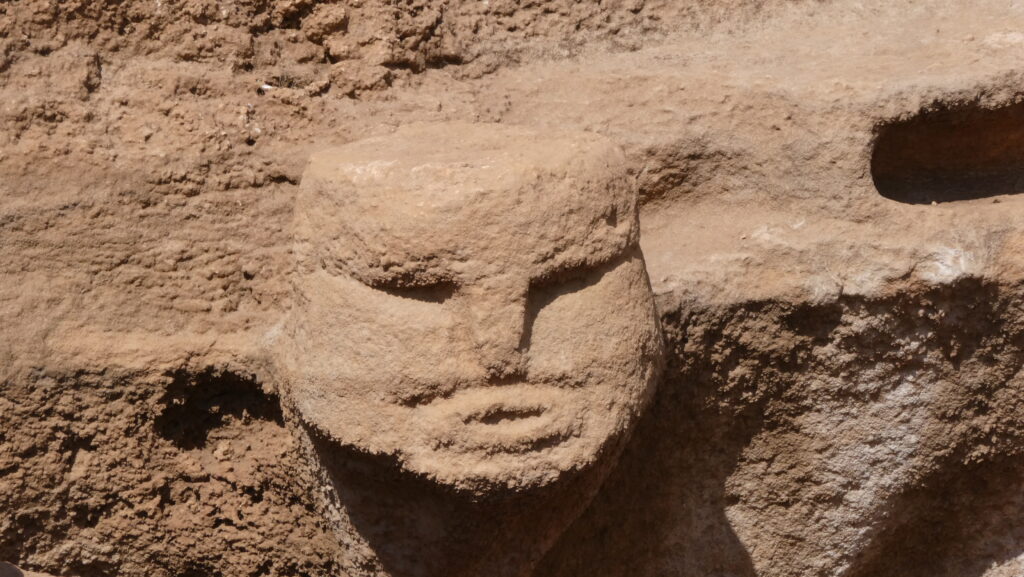
Phallic Shamam?
What is interesting about Karahan Tepe is that while it is clearly of the same culture of Göbekli Tepe there are some notable differences. Göbekli Tepe’s images appear to be much more formal, realistic and finely rendered, while at Karahan Tepe they seem to be, while roughly ritualistic, and less finely rendered, far more dynamic. In this respect Karahan Tepe would appear to have more similarities in terms of expression and execution with Sayburç, another site of this period, now emerging from the ground just west of Şanlıurfa.
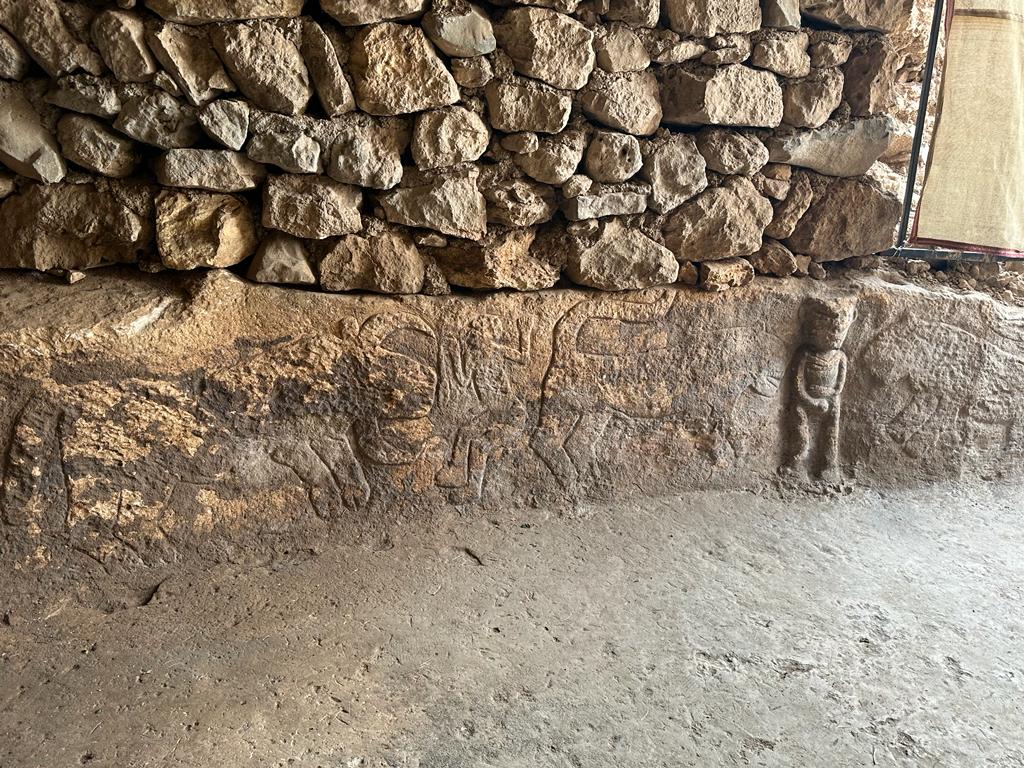
Sayburç – Rituals rendered in stone
Article continued below…
An example of this would be the Chamber of Phalluses at Karahan Tepe, adjacent to a cistern excavated into the bedrock, with a long serpent carved into the bedrock immediately above and behind the cistern. Also in the early morning light a carved head is shown to have an authoritative and commanding expression that we didn’t appreciate the last time.
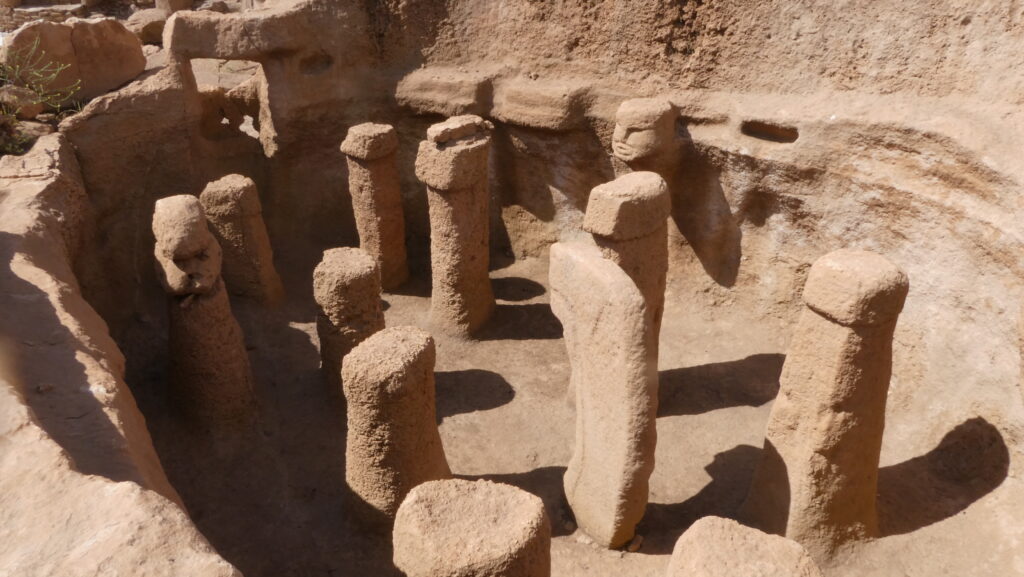
Karahan Tepe – “Cult Room” leading to the Assembly Space
In the adjoining “Assembly area” carved into the bedrock and manmade walls, there is, etched into a pillar a depiction of a person wearing a long robe along with other pillars showing clearly engraved images of animals. This sequence of imagery appears to depict a narrative that is either an expression of a shared story or stages in a process leading to the ritual chamber. In this respect it is very similar to Sayburç.
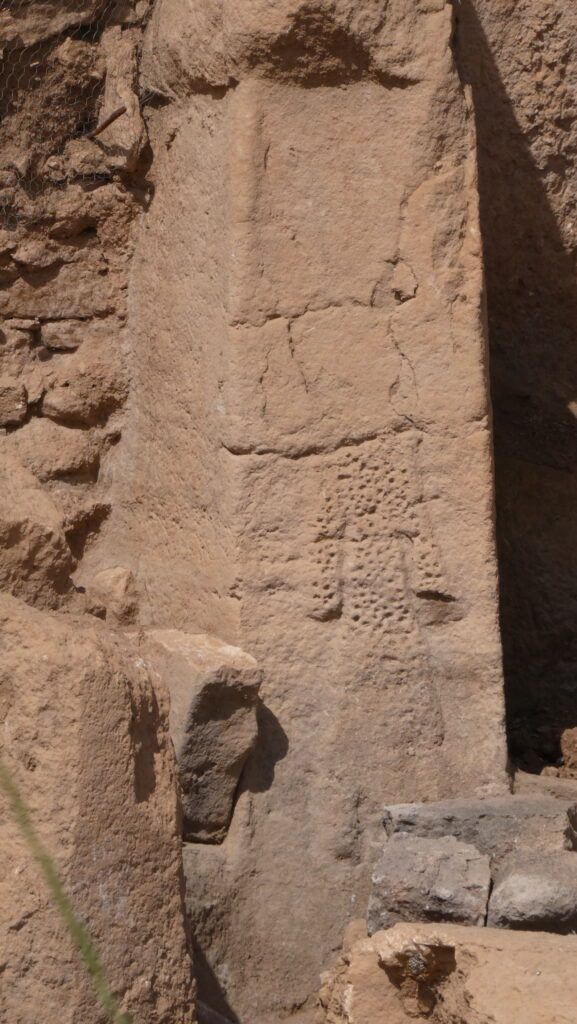
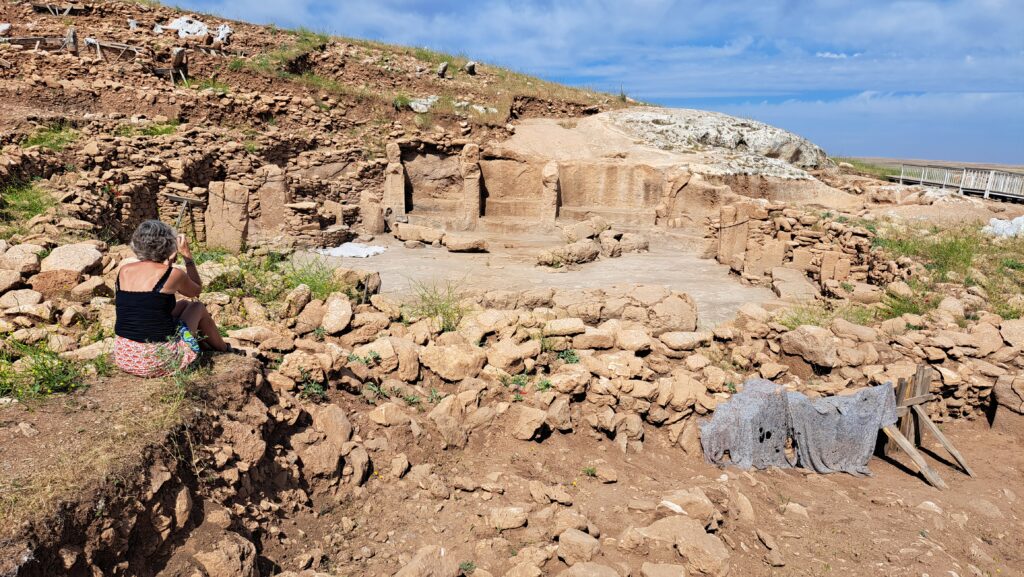
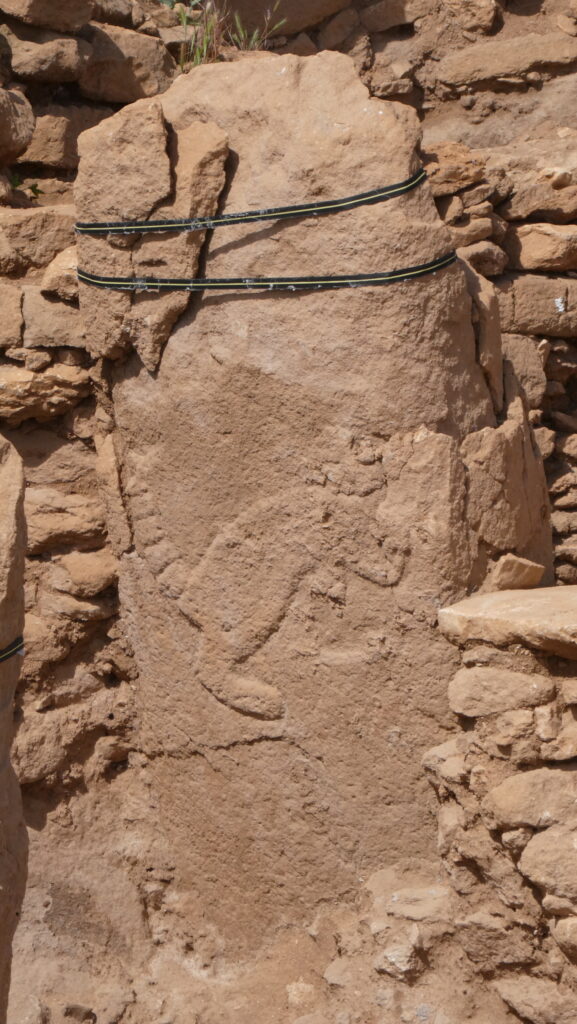
Karahan Tepe – Man in leopard skin coat, the Assembly Space and a Leopard
Also recovered from Karahan Tepe and now exhibited in Şanlıurfa Archaeological Museum are a number of significant statues that clearly fit into this narrative of the Assembly area at Karahan Tepe. One of the features evident in some of the statues is the combination of human being and animal where the animal appears to be on the human being’s back.
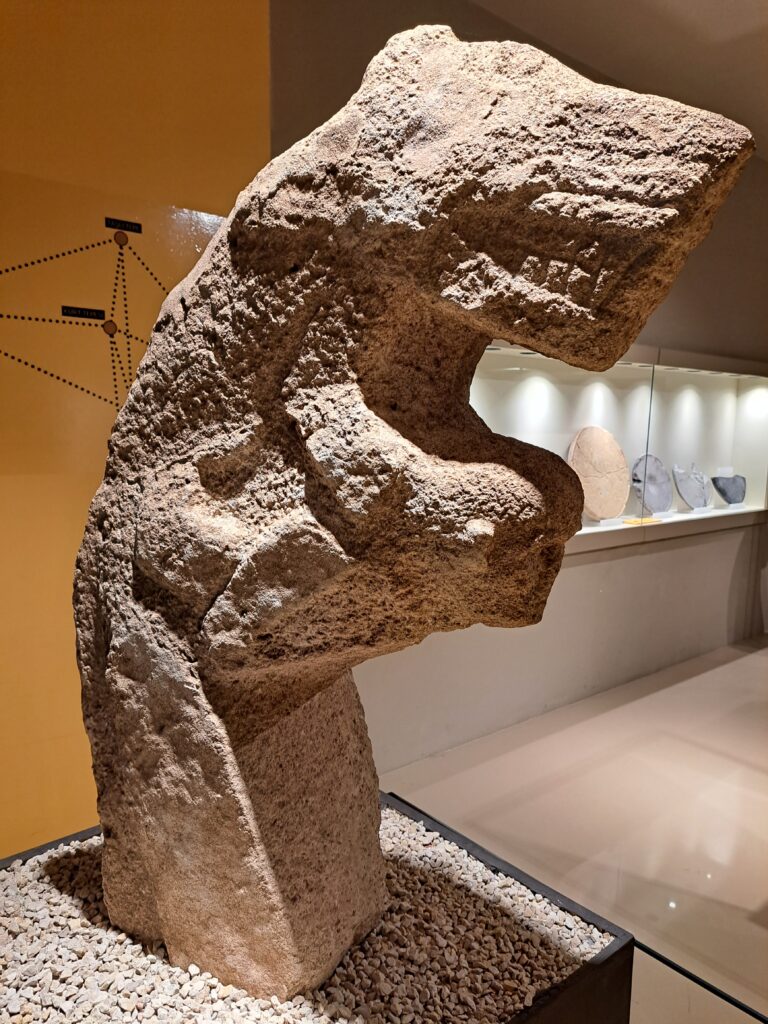
Şanlıurfa Archaeological Museum – Man with animal spirit
It seems to us that while there are a number of ways this could be interpreted, the best explanation could be that this is a depiction of a great cat emerging from the man as the appearance of an inherent image or personality that is part of the man in question. In essence, we have to ask ourselves is the man victim of the great cat, or is the great cat the man’s animal spirit emerging at an important point of ritual. We would argue that it is the latter.
Adjoining this ritualistic area is clear evidence of domestic activity characterised by large bowls, a prominently placed grinding stone and, now in Şanlıurfa Museum, large finely carved limestone platters. One gets the distinct impressions that ritual communal domestic features seamlessly blend into one another.
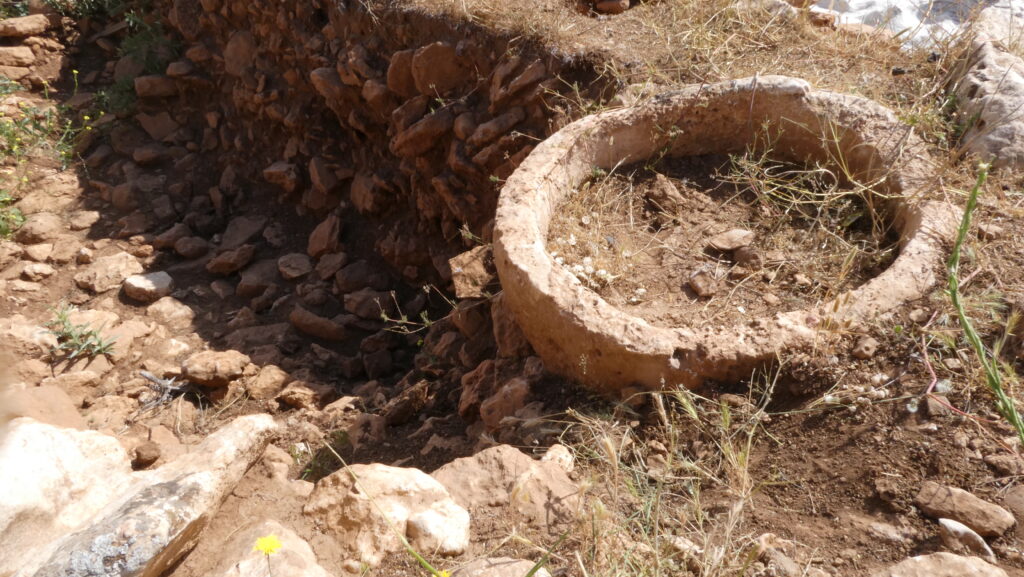
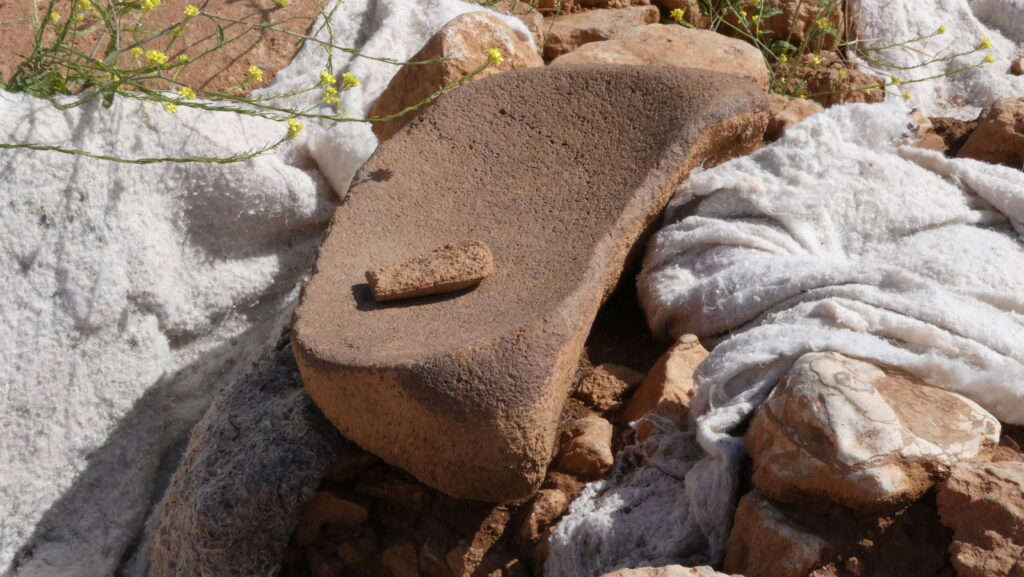
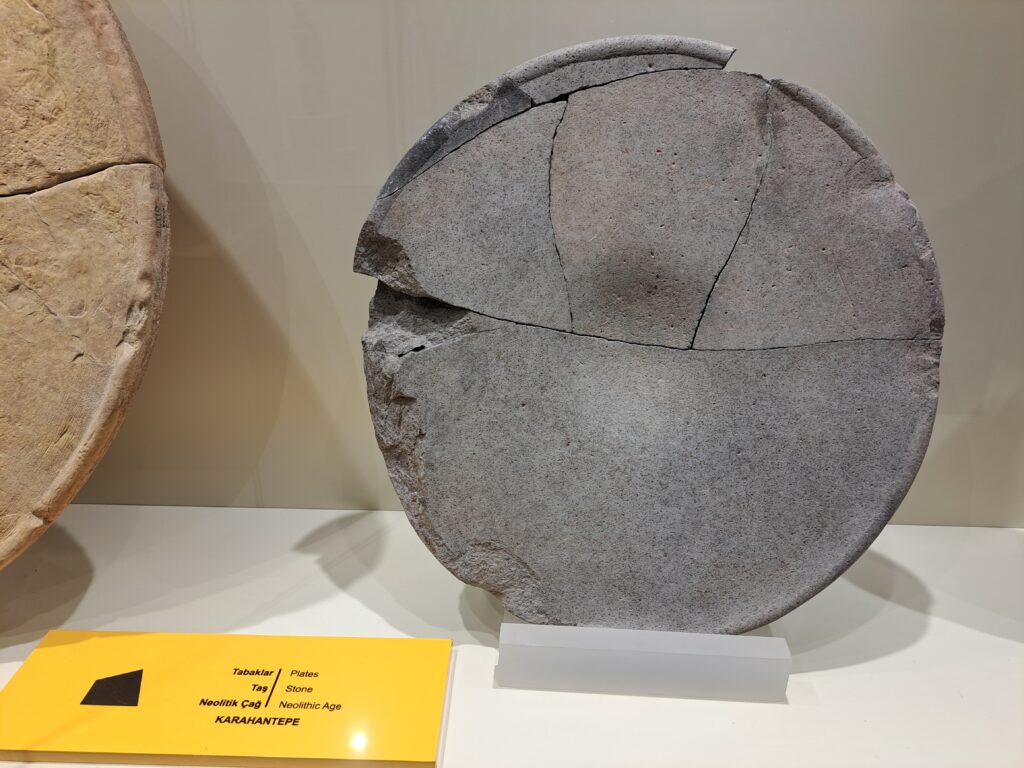
Article continued below…
Developing a line of thought which we expressed in a previous travel journal about the birth of agriculture, which marks this particular geographical region, we would like to concentrate on the grinding stone still in place in the excavation of Karahan Tepe.

As Nomadic communities moved around the landscape from season to season, they would have exploited the natural plants they found. This includes the grasses from which they harvest seeds for grain. Clearly, with each harvest, people would need to process the grains they took and this requires items like pestles and mortars, large stone bowls and most importantly of all grinding stones. All of these items are simply too heavy to be carried and too heavy to steal. Clearly they stayed put and provided the nucleus, along with the stands of natural grass being harvested for their seeds to be used next year when the group came back to this location and gradually that temporary settlement to become permanent and then to generate the complex symbology represented in stone that grew up around these domestic objects. Locals call these stands of wild wheat “Wandering Wheat” and they are still to be found in the region today.
What we are seeing in these Taş Tepeler sites is two dimensional depictions carved into rock, three dimensional friezes and free standing three dimensional statues. This is a transition, and as any stone mason or sculptor will say, represents evidence of Art that is both technically and conceptually complex.

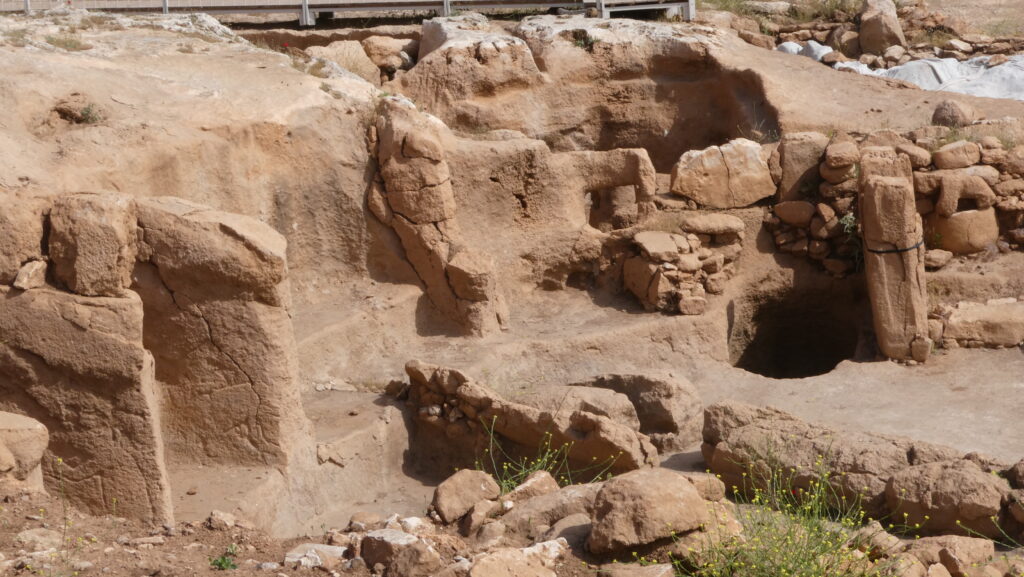
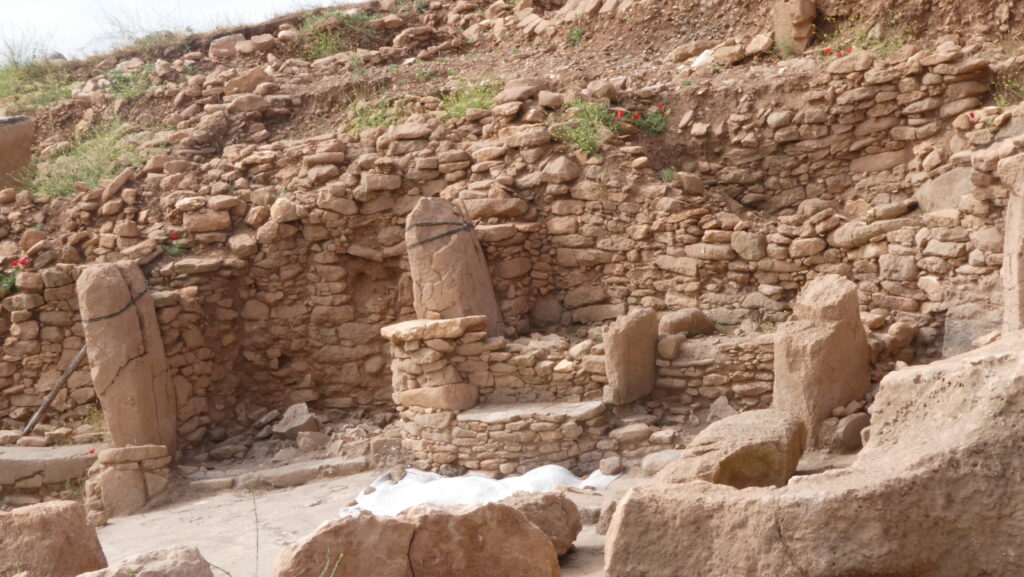
Karahan Tepe – Guardians or Guides?
We are exceptionally lucky that this culture had available to them a stone that they could physically work with basic stone tools which has been able to preserve significant aspects of their material and intellectual culture. In many places in the world where material and intellectual culture was represented by working with materials like wood, which are less durable, we have very little to which we can refer. There are some notable exceptions, such as, the Lion Man of Hohlenstein-Stadel, or the Shigir Idol, which are miraculous survivors. The sites of Taş Tepeler give us an amazing insight into the world of our Ancient Ancestors but they are also tantalising glimpses of what we have lost in other parts of the world.
The term “Neolithic Revolution” was coined by Gordon Childe in 1935 to describe what he perceived to be a rapid and radical period of change in which human communities began to cultivate plants and domesticate animals and forming permanent settlements. The problem with this interpretation and it highlights a concern we all need to have when interpreting archaeological sites from the distant past is that we must not allow the current Zeitgeist to overrule or distort the evidence coming out of the ground. Like many Academics in his time, Childe was a convinced Marxist who followed a deterministic approach and who believed that the process of domestication and settlement was a product of the relationship between work and technology and the impact these factors had on social development and subsequent inequalities in society. We now know this to be completely wrong and while the term “Neolithic Revolution” does have a descriptive utility, it does not, in any way, accurately describe the long and complex organic process that brought Humanity from living in small hunter gatherer bands to settled farming communities. We now know that this process was extremely gradual, intermittent and affected by many factors including environmental, climatic, geographical and human interactions, which extended over thousands of years. What we see at these amazing sites in the Taş Tepeler region, which we have been privileged to visit, is the culmination of this rich and complex history that brings us all to the threshold of the modern world.
We hope you have enjoyed and learnt something new from our travel journal. These places are simply extraordinary and we would love it if you came to see them for yourselves. Be adventurous. Sally and Nick
